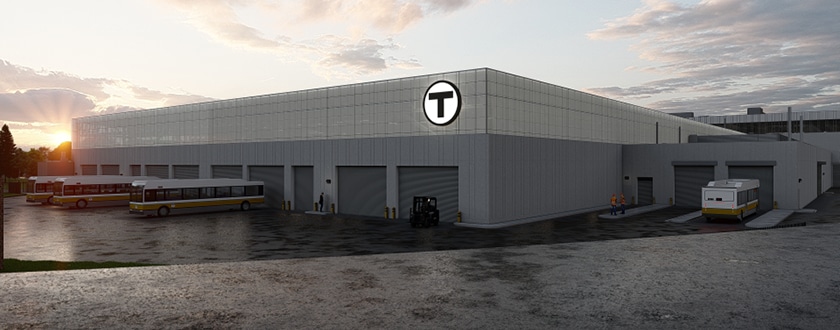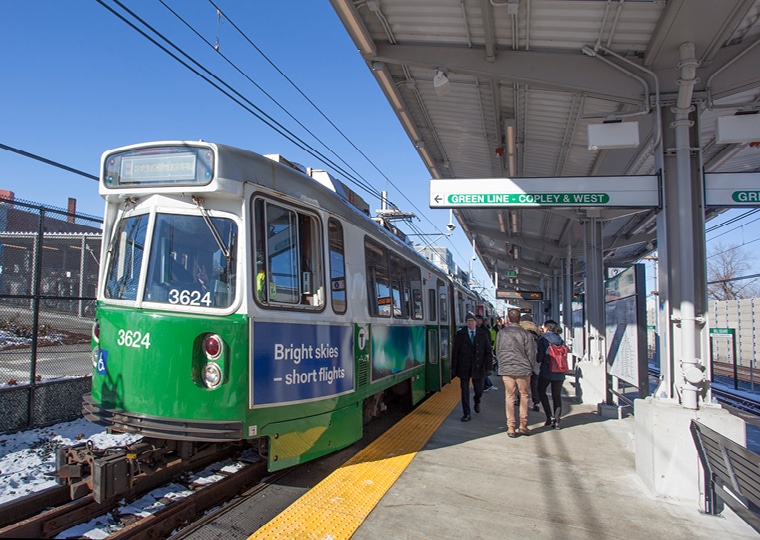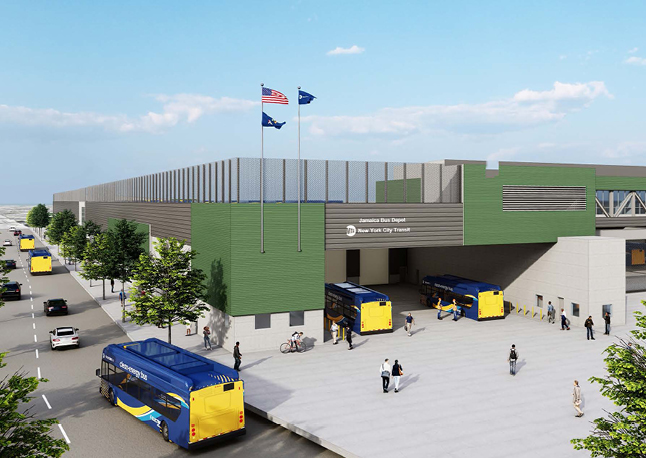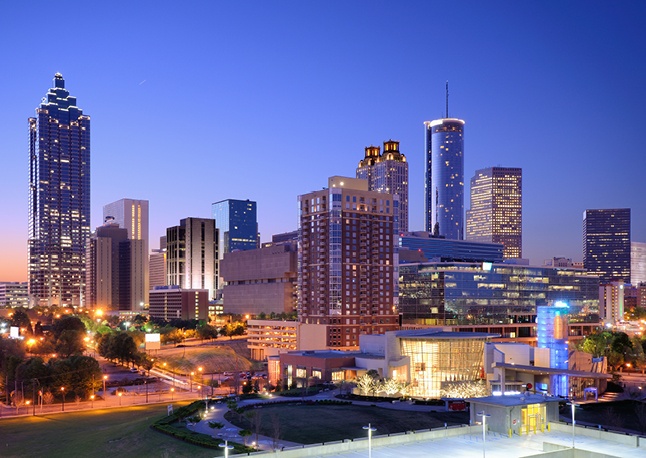As part of a larger effort by the Massachusetts Bay Transportation Authority (MBTA) to transition to a new fleet of battery electric buses (BEB) and create a zero-emission bus transit system, STV is performing a full array of design services for a new, state-of-the-art maintenance facility in Quincy, MA, that will be the first of its kind in the Commonwealth.
The new, 350,000-square-foot facility, which broke ground in February, replaces an existing shop that is decades old, and will store 120 vehicles. It also will include amenities allowing MBTA to wash, maintain, repair and charge BEB vehicles.
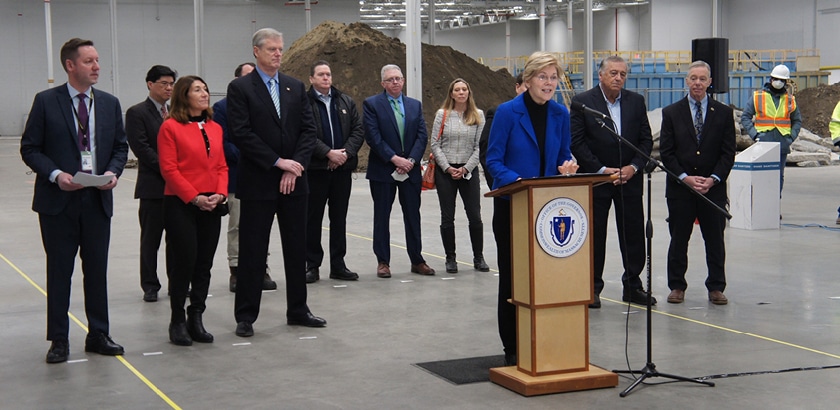
To further advance the MBTA’s commitment to a greener transit system, STV developed sustainable design criteria that will allow the new facility to meet LEED and Envision gold standards.
An accelerated 12-month execution schedule added to the project’s complexity. That, coupled with the ever-evolving nature of BEB technology, meant STV’s team, which consisted of architecture, geotechnical, structural, electrical, and mechanical engineering disciplines, needed to remain adaptable throughout the design phase.
“BEB design technology is fluid and constantly evolving,” said Steve Packard, AIA, and Quincy project manager. “This required our team to be flexible in developing a design that would satisfy the MBTA’s fleet requirements on the facility’s opening day, as well as accommodate modifications to BEB power and electrical systems in the future.”
For the structural team, that meant designing a facility that incorporates heavy and sizable equipment capable of charging the full fleet while maintaining sufficient access and egress points throughout the bus storage and bus maintenance sections of the facility.

While heavy equipment is typically placed on rooftop units, the Quincy project called for designs to support and suspend internal machinery weighing up to 40,000 pounds above floor grade.
To better utilize space for the facility’s electrical equipment, the team developed a complex, uniform structure steel truss framing system that was appended to the roof. Spanning the storage and maintenance buildings, these new structures were successfully designed to include the facility’s catwalk arrangement and house electrical equipment safely above the facility’s floor.
For the design phase, the STV team worked with the MBTA to develop solutions that would allow the agency to meet its goals of reduced carbon emission throughout its transit system. Additionally, the client requested that the facility achieve both and LEED and Envision Gold certifications. These certifications are awarded to environmentally progressive projects through points categories ranging from natural resource allocation and energy savings to public safety and equity.
“While there are some synergies between LEED and Envision, the approach for achieving certification for each is different,” said Preethi Sreeraj, P.E., LEED AP (BD+C), ENV SP, senior civil engineer. “The sustainable products overlap, but things like cost and energy use take different precedence. The design team worked to comply with both certification frames while participating in a new undertaking by the MBTA. I’d never seen so much collaboration between disciplines. In the end, we created a sustainability and resilience plan of over 1500 documents to transfer over to the construction phase.”
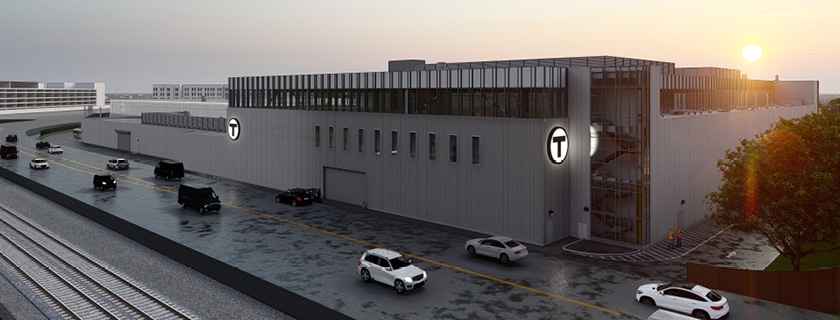
Despite these challenges, the team was able to lean heavily on its past project experience for the MBTA, including such transformative programs as the Silver Line Courthouse Station and Tunnel, the Greenbush Rail Line Restoration, and the Green Line Extension, which recently opened service on its Union Square Branch, as well as its long-standing legacy within the maintenance facility and shop and yard market area to help successfully bring the project into its construction phase.
“Quincy represents the flagship facility in the MBTA’s Bus Modernization Program” said Rob Rink, AIA, chief architect. “STV is proud to be the designer responsible for making the BEB goals targeted for the facility a reality. Our flexibility, interdisciplinary communication skills, and ability to efficiently solve and execute challenges in real time to stay on-schedule is a testament to our well-earned reputation as the national leader in BEB facility design.”
